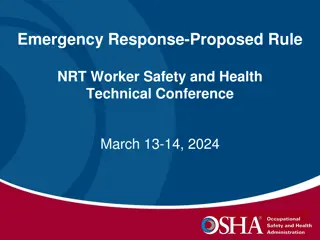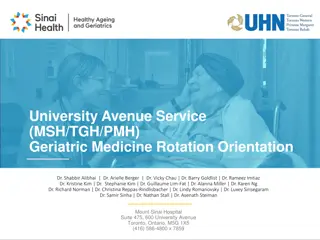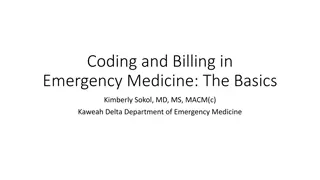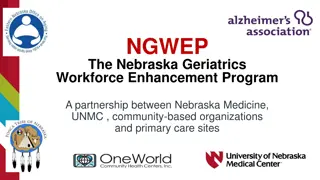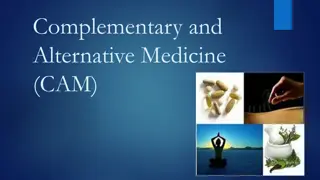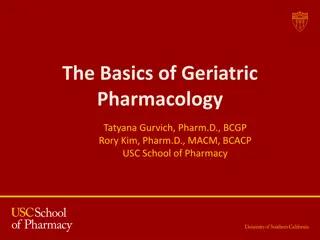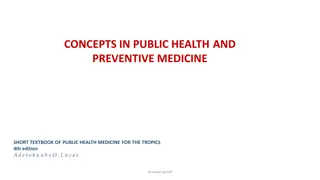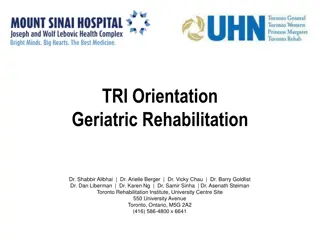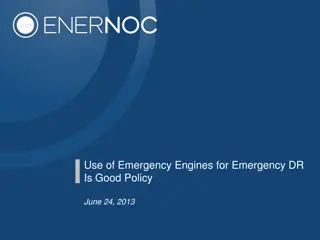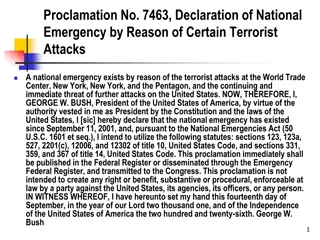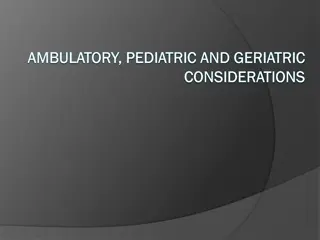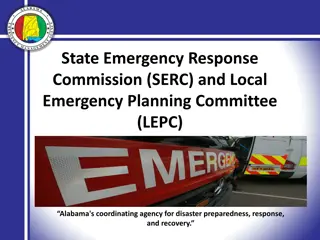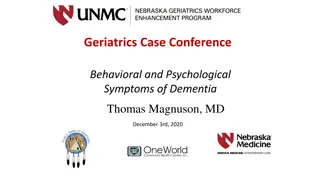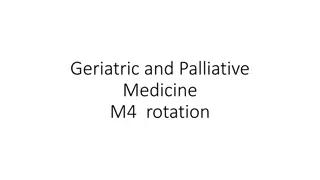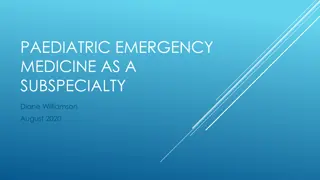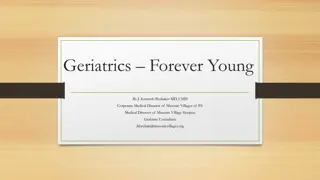
Challenges in Geriatric Emergency Medicine
This medical case study discusses the assessment and management of two elderly patients presenting with complex conditions in the emergency department. The first case involves an 82-year-old male with hyperthermia, while the second case involves a 67-year-old female with fever and loin pain. Differential diagnoses, risk factors, management strategies, and potential complications are explored in detail.
Download Presentation

Please find below an Image/Link to download the presentation.
The content on the website is provided AS IS for your information and personal use only. It may not be sold, licensed, or shared on other websites without obtaining consent from the author. If you encounter any issues during the download, it is possible that the publisher has removed the file from their server.
You are allowed to download the files provided on this website for personal or commercial use, subject to the condition that they are used lawfully. All files are the property of their respective owners.
The content on the website is provided AS IS for your information and personal use only. It may not be sold, licensed, or shared on other websites without obtaining consent from the author.
E N D
Presentation Transcript
JCM 11/2024 OSCE NDH AED
M/82 Brought in by police Found wandering on the street, confused and disoriented Recent URTI symptoms, taken OTC medications Reported missing by his family for 1 day Past medical history Dementia with BPSD on memantine/quetiapine HT on amlodipine/indapamide
Physical examination E1V2M3 Dehydrated BP 90/50, P125 RR24 SpO2 90% on NRM Temp 40.1
Q1. List 3 possible differential diagnoses and provide a brief rationale for each. Q2. List 3 risk factors for developing heat stroke in this particular patient. Q3. Outline your initial management of this patient. Q4. How will you treat this patient s hyperthermia? Which cooling technique is the most effective, and what is a possible concern when using this method? Q5. Name 3 potential complications you would monitor for during the patient s stay in A&E and ICU.
F/67 Fever and bilateral loin pain for 3 days Associated with nausea and decreased urine output Past medical history DM on insulin, poor control with frequent hyperglycemia Recurrent UTI
Physical examination BP 92/60 P130 SpO2 99% on RA Temp 39.5 C Initial investigations Urine multistix Leukocyte++, nitrite++ Hstix 22
Q1. Interpret this Xray. What is your diagnosis? Apart from blood tests, name 2 other investigations you would like to order.
Q2. List 2 risk factors for developing this condition and briefly outline their underlying mechanism. Q3. What are the 2 most common causative organisms of this condition? Q4. What is the Hour-1 bundle for initial resuscitation for sepsis and septic shock? Please discuss its components. Q5. List 3 possible complications of this condition if not promptly treated.
M/54 Known history of COPD Cross border case Recent hospitalization in mainland with tracheostomy done No other details available Complained of SOB P/E Agitated Using accessory muscles SpO2 78% on RA
Q1. What is your initial approach to and management of this patient? During the initial assessment, you notice that the tracheostomy tube is visibly displaced. Q2. What information from the patient s history is crucial for formulating the subsequent management plan, and why? Q3. What is the difference between managing a patient with tracheostomy vs. a patient with laryngectomy done?
Later that shift, you see another patient with a tracheostomy done 1 year ago. He presented with minor bleeding from the stoma for a few days. Q4. What are 3 possible differential diagnoses? The patient suddenly develops profuse bleeding from the stoma. Q5. What is the top differential diagnosis and how would you manage this patient?
F/40 SOB for 1 week Past medical history Asthma DM
Physical examination BP 180/85 P115 SpO2 88% on 5L O2 100% on 10L O2 Initial investigations Hstix 8 VBG pH 7.3 pCO2 5.5 pO2 2.5 HCO3 20 BE -6
An ECG was done. Q2. List 3 ECG findings.
Urgent CTPA was performed. Q3. What is the CT finding?
Q4. What is the definition of massive PE? Q5. After confirming the diagnosis of PE, what bedside investigation would you like to perform? Why? What sign would you look for? Q6. Your colleague suggests to administer IV thrombolytic for this patient (with right heart thrombus). Do you agree?
M/39 Fatigue and muscle weakness for 1 day No sensory deficit/trauma/recent physical exertion No fever/URTI symptoms Past medical history Schizophrenia on antipsychotics
An ECG is done for the patient. Q2. Describe 2 abnormal findings on the ECG.
POCT blood test noted a potassium level of 1.7 mmol/L. Vitals stable, GCS 15/15 Q3. How will you manage this patient? The patient admits that he has been chronically taking (e-cigarettes containing etomidate) for 3 months. Q4. List 3 other medications that can cause hypokalemia if taken in excessive amounts.

